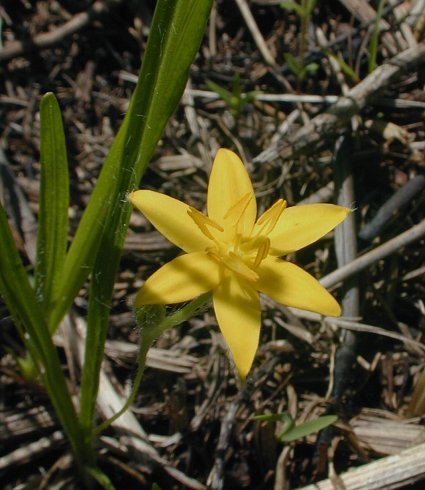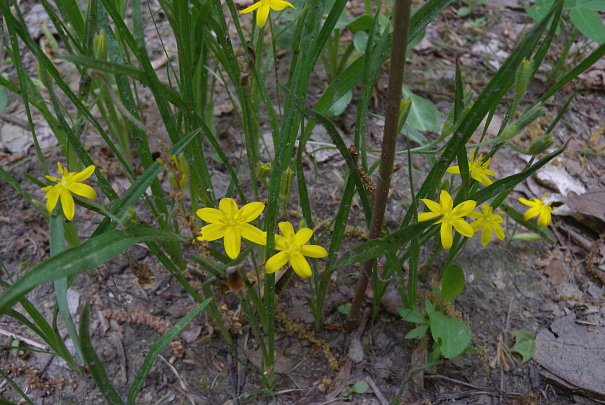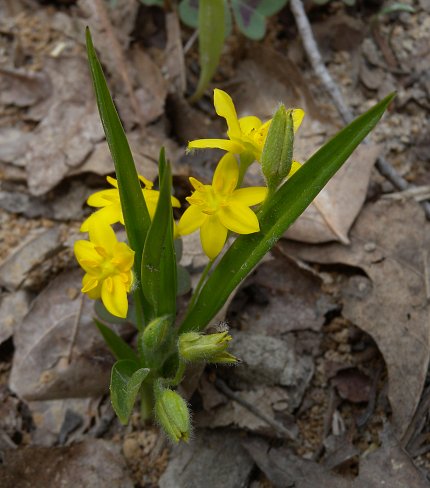Description: This perennial wildflower consists of a rosette of slender basal leaves and slightly shorter flowering stems. The basal leaves are up to 12" tall and ½" across; they are linear or linear-elliptic in shape and smooth (entire) along their margins. They are medium to dark green with scattered white hairs. One or more flowering stems up to 8" tall develop from the rosette of basal leaves; they are medium green with scattered white hairs. Each of these stems terminates in a rather loose umbel of two or more flowers. Each flower is about ¾" across and it consists of 6 yellow tepals that are widely spreading and lanceolate in shape. The tepals (especially the 3 outer ones) are often hairy along their undersides while the flower is in bloom. In the center, a yellow pistil is surrounded by 6 stamens with prominent golden yellow anthers.

The blooming period occurs from
mid-spring to early summer and lasts about 1 month. Sometimes there is
a mild floral fragrance. Each seed capsule splits open irregularly,
releasing several glossy black seeds that are covered with concentric
rows of minute wart-like projections. The root system consists of a
small corm.
Cultivation:
The preference is full or partial sun, moist to slightly dry
conditions, and soil containing loam, sand, or rocky material.
This wildflower is not usually bothered by foliar disease during the
period of
active growth during the spring. It can spread to form loose colonies,
but is not
particularly aggressive.

Range &
Habitat:
The native Yellow Star Grass occurs in most counties of Illinois (see Distribution
Map).
While it is widely distributed, this plant is not
particularly common in any given locality. Habitats
include prairies, hill prairies, edges of bluffs, savannas,
open woodlands and paths
through woodlands, fens, sandstone glades, abandoned fields, and lawns.
Like Claytonia virginica (Spring Beauty), Yellow
Star Grass can spread into lawns if mowing is delayed until late in the
spring.
Faunal
Associations:
The flowers attract small bees primarily, including Little Carpenter
bees (Ceratina spp.),
Mason bees (Osmia spp.),
and Halictid bees
(Halictus spp.,
Lasioglossum spp.,
& others). These insects collect
pollen and
they are females. Other insect visitors include Syrphid flies and
beetles that feed on the pollen. The flowers do not produce nectar.
Cross-pollination is required for
fertile seeds to develop. Among vertebrate animals, small rodents
occasionally eat the corms. Otherwise,
little information is available regarding this plant's relationships to
other fauna.

Photographic
Location:
The photographs were taken at the Loda Cemetery Prairie and wooded
bluffs in
east-central Illinois and west-central Indiana.
Comments:
This dainty wildflower is like a miniature jewel when it is in bloom.
It is rarely more than 6" in height. No other native wildflower within
the state closely resembles it, making identification relatively easy.